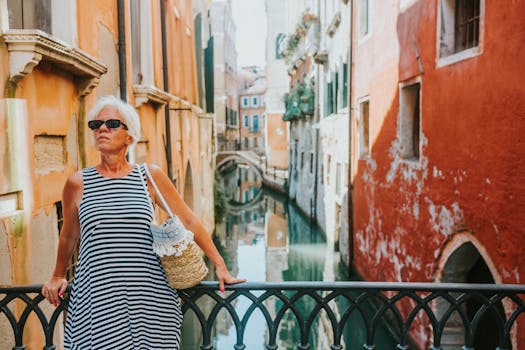
Traveling Through Time: How Europe’s Historical Heritage Shapes Modern Lifestyles in 2025
Introduction to Europe’s Historical Heritage
Traveling Through Time: How Europe’s Historical Heritage Shapes Modern Lifestyles in 2025. Europe, with its vast and diverse historical heritage, has always been a fascinating continent to explore. From the ancient ruins of Greece and Rome to the medieval castles of England and France, Europe’s rich history has shaped the modern world in countless ways. In this article, we will delve into the ways in which Europe’s historical heritage continues to influence modern lifestyles, from architecture to cuisine, and explore the timeless charm of this vibrant continent.
The Influence of Historical Heritage on Modern Architecture
One of the most visible ways in which Europe’s historical heritage shapes modern lifestyles is through architecture. Many of Europe’s cities are filled with historic buildings, from grand cathedrals to humble village cottages, which have been carefully preserved and restored to maintain their original charm. These buildings not only provide a glimpse into the past but also continue to influence modern architectural styles. For example, the Gothic Revival style, which emerged in the 18th century, continues to inspire modern builders, who incorporate elements such as pointed arches and ribbed vaults into their designs.
The Impact of Historical Heritage on Modern Cuisine
Europe’s historical heritage has also had a profound impact on modern cuisine. Many of the continent’s traditional dishes, such as Italian pasta, Spanish tapas, and French bouillabaisse, have their roots in medieval cookery. These dishes have been passed down through generations, with each region adding its own unique twist and ingredients. Today, modern chefs continue to draw inspiration from these traditional dishes, incorporating fresh, local ingredients and innovative cooking techniques to create exciting new flavors and textures.
The Role of Historical Heritage in Shaping Modern Culture
Europe’s historical heritage has also played a significant role in shaping modern culture. From the Renaissance to the Enlightenment, Europe has been at the forefront of artistic, literary, and philosophical movements. Today, this cultural heritage continues to inspire modern artists, writers, and thinkers, who draw upon the continent’s rich history to create innovative and thought-provoking works. For example, the works of Shakespeare, Dickens, and Austen continue to influence modern literature, while the art of Michelangelo, Leonardo, and Rembrandt inspires contemporary artists.
Conclusion: The Timeless Charm of Europe’s Historical Heritage
In conclusion, Europe’s historical heritage continues to shape modern lifestyles in countless ways, from architecture to cuisine, and culture. As we travel through time, we can see how the past has influenced the present, and how the present continues to draw inspiration from the past. Whether we are exploring the ancient ruins of Greece, sampling the local cuisine in Italy, or marveling at the art of the Renaissance, Europe’s historical heritage is a timeless charm that continues to captivate and inspire us.


